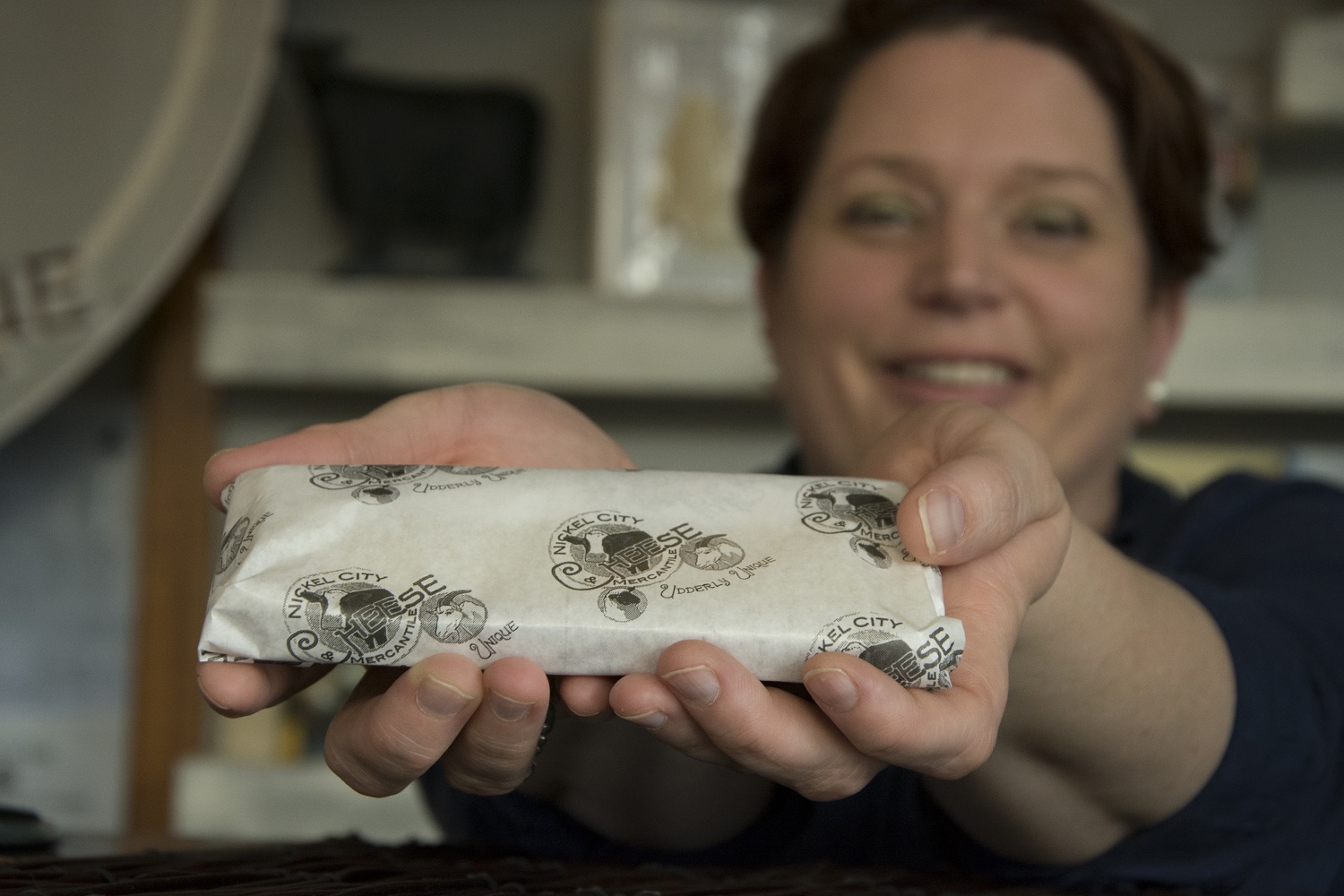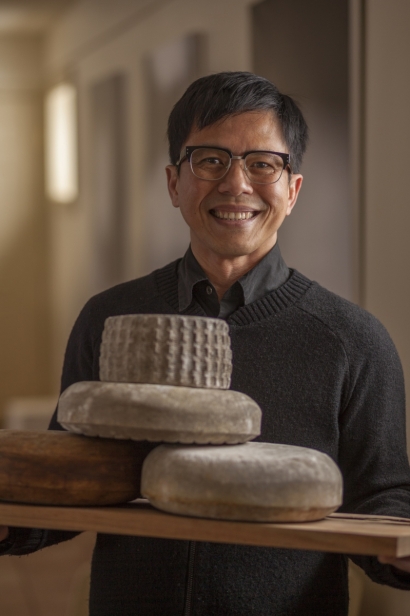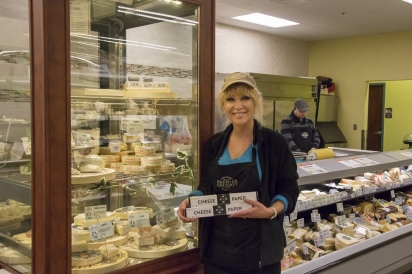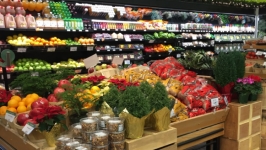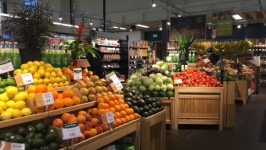La Vie Du Fromage
If you recently paid more for your cheese flight than the wine pairing that accompanied it, you are well aware that this particular dairy product is increasingly more expensive. As prices of American artisanal cheese and European imports continue to rise, you may want to treat this provision as a culinary investment.
We’ve invited three passionate purveyors in Western New York to help us become savvier cheese connoisseurs. Here, they divulge helpful tips about qualities to look for when we shop for cheese, and proper storage methods to practice at home. They also reveal insights into how temperature affects the flavor of cheeses, and how to incorporate leftover cheese into recipes so it’s not wasted.
Riko Chandra, owner and cheesemaker at Reverie Creamery in Mayville, NY, details the characteristics he looks for in fine cheese. He prefers cheeses produced using milk from trustworthy farms that provide superior feed for their animals, adding that artisan cheesemakers often develop long-term relationships with one ideal dairy farmer. Reverie Creamery uses milk produced by cows that graze on grass during the warmer months and dry hay and high quality grain during winter. He works with a local dairy farmer who purposefully avoids using fermented feed such as silage, pesticides on the land and antibiotic treatments.
Chandra believes that a beautiful rind is the sign of true craftsmanship, and as an award-winning artisan cheesemaker, he will tell you that the rind is living proof of the cheese itself. Natural rind cheeses have rinds that are self-formed during the aging process. Generally, no molds or microflora are added, nor is washing used to create the exterior rinds. Those that do exhibit molds and microflora in their rinds get them naturally from the environment. A skilled cheesemaker can deliberately add specific ripening cultures to create certain characteristics or look of the rind. Natural rind might be oiled or periodically brushed. Most natural rind cheeses are traditionally made from raw milk and aged for many weeks or months to develop their flavor as well as their rind. During the aging process, the cheese releases its moisture naturally which results in expressing its flavor profile in direct correlation to the quality of milk used. Many “tomme” style cheeses fall into this category, such as Reverie’s raw milk cheeses: Tom, Gitane and Palomino.
Amanda Taylor, who serves as Premier Gourmet’s cheese shop manager and purchaser in Amherst, NY, tells her customers to avoid purchasing cheeses that appear to be waxy, hard and tightly wrapped in conventional plastic. She encourages individuals to use their olfactory sense when they shop for cheese, explaining that it is perfectly normal for certain cheeses to emit odors that are sweet, pungent and salty. When cheese has been pre-cut or pre-cubed, pre-weighed and tightly shrink-wrapped, it eventually takes on the flavor of the plastic it is packaged in.
Although the shelf life of cheese exceeds the majority of dairy products, proper protocol for cheese storage is imperative. At Premier, Taylor relies on a temperature-controlled unit where Brie cheeses from France gradually ripen until they are ready for consumption. Cheese that is subjected to harsh refrigeration tends to dry out so it is important to avoid freezing it.
When you purchase fine quality artisanal cheese, it is very much alive and needs to breathe. You may notice that even the finest artisanal shops display their cheeses in plastic. Jill Gedra Forster of Nickel City Cheese and Mercantile in Buffalo explains that the plastic her cheeses are stored in is specially made for the product. When she sells cheese to her customers, she places it in traditional cheese paper, which she says is also the best way to store cheese at home. She further recommends serving cheese at room temperature. If you’re going to consume cheese the day or evening you purchase it, she suggests placing it on a serving platter and allowing it to aerate and breathe on a countertop. Similar to wine, the flavors will intensify and you will notice a tremendous difference in the way cheese tastes when you consume it at room temperature.
Riko Chandra also encourages his clients to store the cheeses he makes in traditional paper and refrain from using plastic bags or containers. If your local market or gourmet purveyor does not carry cheese paper, Chandra recommends re-wrapping cheese in parchment or wax paper. You can complete the wrapping process by loosely assembling foil around the outside layer. This technique will prevent moisture loss while maintaining the cheese’s freshness.
Although it may seem more economical for consumers to buy large quantities of cheese, Forster and Chandra agree that it is better to purchase smaller amounts more frequently. They also observe the tradition of selling cheese that is cut to order, which gives customers a unique experience and incentivizes sampling a variety of cheeses. When you visit their artisanal shops, you will notice that they unwrap, cut, re-wrap and weigh cheese individually.
Chandra recommends consuming fresh cheese like mozzarella or ricotta within a few days of purchase. Mold formation is common on cheese and if you’re bothered by a little white mold on a Gouda or Parmigiano-Reggiano, it can be scraped off with a flat knife. If the mold becomes yellowish or distressed or you see red mold, discard your cheese. Use common sense – and your olfactory sense – when you think your Blue Cheese or Roquefort is going bad. Cheese should never smell like ammonia or look slimy.
Unfortunately, perfectly good cheese often goes to waste, but there are ways to incorporate leftovers into simple recipes. Jill Gedra Forster is also the proud proprietor of Lait Cru Brasserie and she recommends making a French dish called Pot Cheese, which calls for a little garlic and white wine. You can also make grilled cheese, mac n’ cheese, spreads and salads.
Forster, Chandra and Taylor agree that your local market or gourmet purveyor should allow you to sample a bit of cheese to help you familiarize yourself with a selection that is foreign to your palate. If you discover a cheesemonger in your neighborhood who is willing to share his or her insight into the world of cheese, remember to ask for an extra sheet of cheese paper for re-wrapping your cheese. Let it aerate and breathe when you get it home, pour a glass of wine and enjoy!


